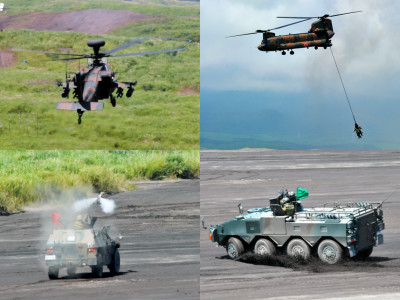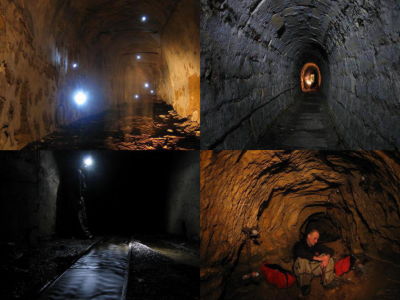What is the trap 'Dragon's Teeth' that physically stops the advance of tanks?

by
Tanks are vehicles equipped with thick armor and powerful artillery, and can move on uneven terrain other than roads with endless tracks, and became the main force of ground warfare in World War II. Since the advent of tanks, people have come up with various ways to intercept them, one of the simplest and most effective being an obstacle called ' dragon's tooth '.
Dragon's Teeth - Stopping Tanks in Their Tracks - Tank Historia
https://tankhistoria.com/cold-war/dragons-teeth/
When tanks appeared in World War I, defenders immediately began developing anti-tank weapons, and the performance of tanks was also enhanced in response to this, but armored vehicles equipped with artillery could be used on tracks. The basic structure of a tank has not changed for a long time. Therefore, although tanks can advance in wasteland where most vehicles cannot pass, they cannot cross wide rivers or trenches. Dragon's Tooth is an artificial obstacle that exploits the weaknesses of these tanks.
Dragon's teeth come in a variety of shapes, materials, and arrangements, but the most commonly seen ones are square pyramid-shaped obstacles made of reinforced concrete etc. that are closely lined up, as shown below. Thing. When a tank tries to get over the dragon's teeth, the bottom part rides up to the top part, separating the ground from the track, making it unable to move. The name 'Dragon's Tooth' comes from the fact that many blocks are placed close together to resemble a dragon's tooth.

In general, the dragon's teeth are made up of multiple rows, and the height gradually increases until the tank can no longer advance. In addition, to prevent the teeth from falling or shifting when a tank hits them, they are often placed on a concrete base buried 1 to 2 meters below the ground.

Dragon's Tooth is a static defensive measure, so it can be placed near vast defensive lines such as Germany's
Also, the dragon's teeth have the effect of stopping the advance of tanks, but the real value is that they can guide tanks to a point where they can easily intercept them. If a tank unit finds a dragon's tooth in the direction of its advance, it cannot just proceed and run aground, so basically it will have to take a detour and look for a route where no dragon's tooth exists.
In other words, the defender places dragon's teeth in locations that are vulnerable or difficult to intercept, and lures enemy tank units into a ' kill zone ' where weapons to attack tanks are concentrated. This means that it can be effectively intercepted.
Most implementations combine multiple defense systems, such as installing pillboxes and bunkers to attack tanks stuck behind the dragon's teeth, or deploying mines and barbed wire between the dragon's teeth. It is said that it is.

Of course, dragon teeth are not indestructible; trained engineers can destroy dragon teeth or cover them with dirt so that tanks can pass through them. However, it is difficult to perform these tasks smoothly in the heat of war, and it is possible for the defender to achieve the goal of inflicting some damage on the enemy and delaying the advance.

Dragon's teeth are relatively easy to construct and durable, so they remain all over the world, especially in Europe, where they served as a military unit in World War II, and in some countries, such as Switzerland, where they remain in strategic locations. It is said that a dragon's tooth is placed on it. In addition, in the war between Russia and Ukraine that occurred in 2022, an analysis has been reported that ``the Russian military installed dragon's teeth around Mauripoli, which was under its control.''
Russian military may set up 'dragon's teeth' defensive obstacles around Mariupol, British analysis [Ukraine situation]: Asahi Shimbun Digital
https://www.asahi.com/articles/ASQC85WKSQC8UHBI02M.html
Related Posts:
in Note, , Posted by log1h_ik







